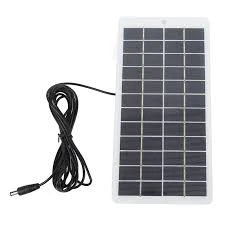Exploring the Benefits and Applications of Bifacial Solar Panels in Renewable Energy
The Growing Importance of Bifacial Solar Panels in Renewable Energy
In recent years, renewable energy has become a crucial component in the global effort to combat climate change. Among the various technologies available, bifacial solar panels have emerged as a notable innovation. These panels not only capture sunlight from the front but also from the rear, significantly increasing their efficiency and energy output. This article explores the various advantages of bifacial solar panels, their applications, and their role in the future of sustainable energy.
Understanding Bifacial Solar Panels
Bifacial solar panels are constructed with solar cells mounted on both sides of a transparent backing, allowing them to harness solar energy from the front and the rear. This dual-sided design takes advantage of light that reflects off the surrounding surfaces, such as ground or building materials. As a result, bifacial panels can produce more electricity than traditional monofacial panels, particularly in areas where there is high albedo, or ground reflectivity.
Advantages of Bifacial Solar Panels
1. Higher Energy Efficiency One of the most significant benefits of bifacial technology is the increase in energy yield. Studies suggest that bifacial solar panels can achieve efficiency gains of 10% to 30% compared to their traditional counterparts, depending on installation conditions. This enhanced performance makes them an attractive option for large-scale solar farms as well as residential applications.
2. Cost-Effectiveness While bifacial panels tend to have higher upfront costs compared to monofacial panels, the improved energy output can result in lower levelized cost of energy (LCOE) over time. This allows for a quicker return on investment, particularly as energy prices rise and technology improves.
3. Durability and Longevity Bifacial solar panels are built to withstand various environmental conditions, including snow, rain, and high temperatures. Their robust construction typically leads to a longer lifespan compared to traditional panels, reducing the need for frequent replacements.
4. Environmental Benefits By maximizing energy output per square meter, bifacial panels can reduce the land footprint required for solar installations. This is particularly beneficial in regions where land use is a concern, allowing for more efficient use of space while still contributing to renewable energy generation.
panel bifacial

Applications of Bifacial Solar Panels
Bifacial solar panels are versatile and can be utilized in various applications, from large-scale solar farms to rooftop installations. Their ability to capture reflected sunlight makes them particularly effective in environments with a lot of reflective surfaces, such as snowy or desert areas. Additionally, bifacial panels are often used in tandem with tracking systems, which move the panels to face the sun throughout the day, further enhancing energy capture.
Moreover, the integration of bifacial panels in building-integrated photovoltaics (BIPV) is gaining traction. This approach allows architects and builders to incorporate solar technology directly into the building’s design, using the facade and roofing materials as energy-generating surfaces. This not only aids in energy generation but also enhances the aesthetic appeal of modern structures.
The Future of Bifacial Technology
As the renewable energy sector continues to grow, so too does the demand for more efficient and sustainable technologies. Bifacial solar panels represent a significant step forward in solar technology, and their market share is expected to increase rapidly. Ongoing research and development aim to enhance their efficiency further and reduce costs, making them even more competitive against other energy sources.
Several countries have already begun to embrace bifacial technology, developing government incentives to encourage adoption. The potential for widespread implementation is immense, especially as global initiatives push towards electricity generated from renewable sources.
Conclusion
In summary, bifacial solar panels are not only an innovative advancement in solar technology but also a vital player in the transition towards a more sustainable energy future. With their higher efficiency, cost-effectiveness, and broader applications, they present a promising solution to meet the world's growing energy demands while addressing climate change challenges. As technology continues to evolve, the role of bifacial panels in renewable energy systems is set to expand, making them an essential element of our energy landscape.
-
String Solar Inverter: The High-Efficiency Solution for Smart Solar EnergyNewsJul.14,2025
-
Revolutionizing Rooftop Energy with the Power of the Micro Solar InverterNewsJul.14,2025
-
Power Independence with Smart Off Grid Solar Inverter SolutionsNewsJul.14,2025
-
On Grid Solar Inverter: Powering the Future with Smart Grid IntegrationNewsJul.14,2025
-
Monocrystalline Solar Panels: High-Efficiency Power for the Future of Clean EnergyNewsJul.14,2025
-
Bifacial Solar Panel: A Smarter Investment for Next-Generation Energy SystemsNewsJul.14,2025







